Do I dare ask...Misting plants...
I am not trying to start a war here, so please refrain from this. Everyones opinion and ideas are certain to be different and differnt strokes for different folks. So please respect what everyone has to say even if you dont agree.
If misting is so terrible, why does like every house plant book suggest it for certain plants?
If it DOESNT raise humidity for a plant, then why do these house plant book writers say to do it for humidity?
My Rubber tree didnt seem to like it. She got a possible infection on her leaves from it. I believe Al called it Odemea or something close to that.
I have many plants now that I read it is great to mist, but read so many posts from you all about how how it isnt so great.
So I am lost on this subject.
Comments (45)
greenlarry
11 years agolast modified: 9 years agoWhat, misting is bad? Since when? I always used to mist my plants in the past. The reason I dont now is its impractical-it wets everything in sight and gets me in trouble, lol.
Now if I have a plant that likes misting it goes in the shower with me.Stush2049 Pitts. PA, zone 6
11 years agolast modified: 9 years agotifflj,
Just like anything, too much is bad. Some plants love it and do well with it. This time of year, our houses are dryer than normal. If you use a little (teaspoon) of Murphy's oil soap and some neam oil with a bit of alcohol will do the trick. Use up the mixture every time you use it. I have not had a bad reaction on any of my plants. I try to do this once a month.
StushRelated Professionals
Norfolk Landscape Architects & Landscape Designers · Beavercreek Landscape Architects & Landscape Designers · Brentwood Landscape Architects & Landscape Designers · Fillmore Landscape Architects & Landscape Designers · Arlington Landscape Contractors · Jackson Landscape Contractors · Stamford Landscape Contractors · Chesapeake Ranch Estates Landscape Contractors · Federal Way Landscape Contractors · Hampton Bays Landscape Contractors · Kahului Landscape Contractors · Northport Landscape Contractors · Petaluma Landscape Contractors · Plymouth Landscape Contractors · Bloomingdale Interior Designers & Decoratorsjojosplants
11 years agolast modified: 9 years agoI do once in a while, but more to wash the plant of dust than anything. I'm in a desert climate.
As you say, some feel it works, many say it doesn't. I have 2 small table top fountains I use in my plant room for a little humidity.
JoJo
tsugajunkie z5 SE WI ♱
11 years agolast modified: 9 years agoMisting, in and of itself will not usually harm a plant. What you hope to accomplish is the question.
If you want to clean the plant a bit or tick off spider mites, then misting is fine.
If you want to raise humidity, it is a waste of time.tj
tropicbreezent
11 years agoI often mist and just ignore anything others might say. As for raising the humidity, it depends on a number of factors. If the relative himidity is very low you need quite a lot of water to raise it appreciably if you're dealing with a large space. The more air you have the more water you'll need. If there's a breeze constantly bringing more new air in it will be a losing battle. But there's still some benefit. Even in the tropics, in the dry season, there's a huge difference in humidity between day and night. In some parts that difference in the same day can be from 30% to 90% or even greater. A lot of tropicals are quite happy with that.
greenlarry
11 years agolast modified: 9 years agoOne thing, pelargoniums (what everyone insists on calling geraniums) dislike misting. They will sulk at you!
jojosplants
11 years agolast modified: 9 years agoAl~
That's an interesting post and I will be back later with tons of questions. ;-) you know me.. I'm a why person and always curious. :-)Greenlarry~ I cracked up laughing at your post of getting in trouble. ;-)
I'm in Arizona, it's dry! It would take a lot of misting! I run our clothes dryer inside in the winter, and that really helps. Sometimes run a humidifier too. I think we need it more than our plants. lol..
JoJo
JoJo
jojosplants
11 years agolast modified: 9 years agoAl~
That's an interesting post and I will be back later with tons of questions. ;-) you know me.. I'm a why person and always curious. :-)Greenlarry~ I cracked up laughing at your post of getting in trouble. ;-)
I'm in Arizona, it's dry! It would take a lot of misting! I run our clothes dryer inside in the winter, and that really helps. Sometimes run a humidifier too. I think we need it more than our plants. lol..
JoJo
dellis326 (Danny)
11 years agolast modified: 9 years agoNice explanation Al, Thanks.
I never mist, I use a humidifier. Makes being in the room more comfortable too.
birdsnblooms
11 years agolast modified: 9 years agoHowdy..
Tiff...When my love for plants began, I decided to buy a plant book. As time progressed, more books were added, as were plants.
Every author suggested misting. Especially tropical plants.
Since book 1, my plants were sprayed daily..all but succulents, and even they're showered in the sink once every 6 or so months. Mainly to clean off dust particles..
Of course, misting alone isn't going to produce a jungle effect.
There are many ways to increase humidity..running a humidifer..setting a plant on stones w/water...boiling water...grouping plants...set a pot of water on stove-like heaters. 'space-heater.' Set plants in tub and allow shower to run over leaves. Close bathroom door afterwards so steam fills the room.
But misting has its benefits. Spraying plant to plant you'll never know what you'll find..for instance, the surprise can be something as nice as buds/flower, or on the flip side of the coin, insects.
Large leaves, 'Rubber Plant,' can be washed and wiped with soft cloth. Cleaning muliple leaves would take days per plant..lol
Ever shop/browse at a commercial green house? Misters are set to go off every 15-30 mins.
During winter, times I feel lax, I sometimes neglect misting..and you know what? There's a difference. A big difference.
BTW, if you decide to mist, buy a mister with attached hose. HD has hose-type sprayers for 7.00..the sprayer is adjustable, and has a botton to press for constant spraying. Like the nozzle used when adding gas to a car.
This type needs pumping, but no biggie. Pump-type sprayers last longer. The spring doesn't break as fast.Since most of my plants are grouped, misting increases humidity for both reasons.
Water removes dust from foliage..dust that clogs pores.
Deep green or variegated leaves look shiny.BTW, never use leaf shine. That junk definately clogs leaf pores. Don't use milk either. Over-priced plant killer.
Misting is up to you, Tiff. Why not experiment?
Set group A plants on one side, and group B on the other.
Mist one group..see if there's a difference, whether or not spraying is beneficial or does harm.Toni..who doesn't want to argue with anyone..:)
tapla (mid-Michigan, USDA z5b-6a)
11 years agolast modified: 9 years agoIf you mist a dusty surface, including a leaf surface, what happens? A little puddle of mud forms on the leaf surface and dries there, where it becomes even MORE difficult to remove. Misting doesn't magically make dust disappear, it just concentrates the dust - unless you HOSE the plant off or set it in the sink/shower and actually SPRAY it to dislodge the dust or mud, and then we're not really talking about misting.
I never mist, yet I manage to not miss new growth, blooms, buds, insect issues, or any other evidence that might be discovered while misting. I make these discoveries while watering or just looking at how my plants are doing, which doesn't require misting. I've posted hundreds of pictures of plants without a single blemish on the foliage. So if growers A and B both have very nice plants, with grower A misting and grower B NOT misting, what are the logical conclusions? Can we say misting is necessary to healthy plants? Nope. Can we say it is HELPFUL in producing healthy plants? Nope. Can we say healthy plants are achievable w/o misting? Yes we can. You see, it doesn't matter what grower A thinks. If grower A thinks misting is necessary for healthy plants and grower B produces healthy plants w/o misting, applying simple logic demonstrates that grower A has to be in error. No other conclusion is logically possible w/o adding a lot of what-ifs and fabricated scenarios.
Even if plants are grouped together, the rise in humidity gained from misting lasts only a few minutes. If we're generous and say it lasts 10 minutes, misting daily leaves us with 1,430 minutes of the 1,440 minutes in a day where the plant is dealing with ambient conditions unenhanced by the effort of misting. In light of this consideration, I don't think it's going too far out on a limb to suggest that at best, misting offers little to no hope of improving a plants lot to the point where if the effects could be quantified that they would be discernible.
So, even if you disregard the potential ill effects mentioned a little upthread, the practice leaves little reason to expect any tangible benefits.
Al
TheMasterGardener1
11 years agolast modified: 9 years agoI agree with tapla here 100% Avoid misting indoor grown plants. There is no reason and it is a great way to grow mildew and mold.
tropicbreezent
11 years agoIf there was any truth in the assertion that misting was detrimental to plants then there'd be no rainforests, no cloud forests, and no luxuriant vegetation around tropical waterfalls. Plants actually thrive in those conditions (probably most house plants are from those environments anyway). Dry season in the tropics plants usually cease growing. Wet season their leaves are wet most of the time and they have maximum growth.
greenlarry
11 years agolast modified: 9 years agoI think being in a hot, moist jungle can not compare to misting! In the jungle the conditions are stable, temperature much more even than in our air conditioned and dusty homes. And it rains a lot, so much so that leaves need to shed water quickly so as no water stays sat on the leaves possibly causing rot or inviting fungal infection. Thats unlikely to happen at home of course but salts in the water do get left behind on our leaves. We then get convinced we have to buy this leaf cleaning product of course...
eahamel
11 years agolast modified: 9 years agoI mist my plants sometimes, and frequently add a small amount of fertilizer and Consan. After all, they do get rained on a lot in rain forests.
greenlarry
11 years agolast modified: 9 years agoNot all our plants come from rainforests of course, and raining is different to humidity.
TheMasterGardener1
11 years agolast modified: 9 years ago"If there was any truth in the assertion that misting was detrimental to plants then there'd be no rainforests, no cloud forests, and no luxuriant vegetation around tropical waterfalls. "
A topical water fall in your living room or garage?? :)
Ask any expert in indoor cultivation about misting leaves. I grew indoor cherry tomatoes in a controlled climate under HID and produced huge harvests of cherry tomatoes from one indeterminate cherry bush. I would never mist for any reason at all. It would only cause mold or mildew. Even with the inline jet fan I had taking air out of the room, there is still risk of mold. Even in nature there is risk of mold, let a lone inside.
I always thought to take the same things about growing outside and bring them inside and that will not work.
This is just great!!! Well said, Tapla!
"Misting does help satisfy the nurturing side of growers who adhere to the practice, though. ;o)"
jojosplants
11 years agolast modified: 9 years agoI guess in a sense, I don't mist, and more like wash the plants. I spray to the point of run off. No puddles. ;-) My plants are in a craft room, no harm can be done to the floor. lol..
I too like to look plants over when watering and waiting for them to drain.
Al~ as always, great information!
JoJo
greenlarry
11 years agolast modified: 9 years agoPeople are comparing misting to being in a rainforest- wrong!
Yes its humid in a rainforest, but it is also in open air, with free air movement, totally different to being indoors! Yes misting can encourage mold, and theres a lot of mold in the rainforest too because of all the humidity and warm temps- bound to be! Its not so detremental to a big rainforest plant as it would be in a comparitively small house plant!
Keep a plant in a windowsill, mist every day, and watch the mold form on the bottom of the window.
Really to have any beneficial effect on an indoor plant youd have to mist the plant constantly! And boy would your furnishings suffer!
Now a gravel tray would be more effective. U have one under my palm and its warding off the brown tips. The plant cant take up the water itself but the water disappears over a few days due to evaporation.tapla (mid-Michigan, USDA z5b-6a)
11 years agolast modified: 9 years agoFWIW - as an experiment, I placed a small tree on an end table in my living room on a bed of large gravel contained in a humidity tray filled with water. I placed a digital hygrometer in the tree such that it was about 7-8" above the surface of the gravel. The difference in humidity between the hygrometer being placed in the tree vs 6 ft (2 m) away from the tree was only 4/10 of 1% - something like 35.2 vs 35.6% - an insignificant change. Maybe if there were 20 or 30 plants on humidity trays and the room had minimal air exchange (enough to keep mold from forming) it might make a difference, but don't expect a humidity tray to cure your burned leaf tips/margins. It's just not realistic to think it will. Does it work better than misting? I guess it does, if you consider .4% better.
I would encourage you to do your own experiments so you get a realistic look at how little difference humidity trays actually make. If you're going for raising humidity - go for the whole room with a humidifier designed for that purpose. THAT can make a significant difference, though the most important part of maintaining foliage in pristine condition is a root zone capable of supporting good root health and root function. Looking beyond that to increasing humidity is like thinking that changing from figure skates to hockey skates makes you a hockey player.
Al
cactusmcharris, interior BC Z4/5
11 years agolast modified: 9 years agoMisting is my preferred method of rooting unrooted succulent plant cuttings, and I've taken it up as my life's work that that's how succulent cuttings root most effectively. Nothing succulent will not root if effectively misted, I've found.
tapla (mid-Michigan, USDA z5b-6a)
11 years agolast modified: 9 years ago.... and you're sure of this, how? ;-)
That sort of false reasoning actually has a name. It's termed a Questionable Cause Fallacy.
The fallacy has the following general structure:
A and B are seemingly connected (but no third, common cause is looked for).
Therefore A is the cause of B.You THINK your palms are free from burned leaf tips because of the humidity tray, but there are so many other contributing factors that it's a near certainty that at best, the humidity tray plays only a very minor part.
Example: I bless my plants every morning and the foliage on all are pristine. It's a good thing I learned that blessing.
Al
cactusmcharris, interior BC Z4/5
11 years agolast modified: 9 years agoAl,
The one whereupon it is written 'May the Farce Be With You'? Yes, me too.
meyermike_1micha
11 years agolast modified: 9 years agoIn my experience if I may? I have found that the two 'MOST' effective means of raising humidity in my plant rooms are by humidifier and grouping my plants together.
Grouped plants:
I have two hygrometers in two dedicated rooms, one with no plants, and one with most of my plants grouped together in unheated rooms, with the doors shut.
The plant room almost always reads a whopping 75% humidity while the other is 45% or lower!
I use fans 24 hours a day to keep the moisture in my plant room from settling and detroying anything in there that doesn't like it, such as walls, windows, and furniture. It also prevents mold and mildew and other possible diseases.In the dry areas of my home, heated, I HAVE to use a humidifier. That does the trick!
Misting plants here and there does 'nothing' to raise the humidity in my home as long as the heat is on. Setting plants on pebbles trays takes up too much room and does not work for my plants, not even my orchids.I am guilty myself of misting mine at times. One of the reason why I do is discouarge spider mites or any other pest that does not like being wet with constant air movement and help keep the leaves clean.
I do have a nurturing side of me that possess me to mist because I like it, although I do know that there may be disadvantages so politely and scientifically described, and misting is is far different from hosing them down in the shower of which is something I do often, and hosing them down in my greenhouse which I can get away with as long as I use fans and constant air movement which not everyone has the advantage to do.
By the way, plants growing outside compared to inside is two different worlds.
What is 'fact' is that anything that slows down transpiration, slows the rate at which water in the soil solution is used....which also reduces the amount of 'nutrients' delivered via the nutrient stream, which DOES impact growth. DO I want this?
Slowing down photosynthesis is something I also sacrifice as a well informed grower, in which I always think twice about.
I have noticed after growing these many years, that the mixes in the pots of plants of which I do hose or 'mist', dry out at a much slower rate than those I do not mist, for good reason as describe by Al.
It does not harm me to be armed with the science and facts here, and with the experiences of others, but in the end, I will either do what is best from plants perspective or that of own own.
That is what I love most about being a grower and this forum.Every time something like this kind of thread comes up, I always examine the facts closely, then make an informed descision.
Mike
greenman28 NorCal 7b/8a
11 years agolast modified: 9 years agoHey, Mike!
I know you to be a nurturer, indeed, and it's great that you point it out as something
that satisfies you as a grower. When you mist, I know that you're also inspecting plants
and checking for new buds on your Orchids, hahaha ;-)I remember when you had so much humidity in your plant room that the air was uncomfortable to breathe!
If anyone can raise the humidity in a closed room, it's definitely you! :-D
Joshjodik_gw
11 years agolast modified: 9 years agoMike, Al, and Josh... between the three of you guys, there's no doubt you can steam up a room, or fog some glasses! ;-)
But seriously... a few key words to keep in mind might be facts, science, physics, critical thought and problem solving skills, logic and common sense, individual environments, climates and micro-environments, limiting factors, etc... and how all these things together conspire to tell us what we need to know about moisture, humidity, and the health of our plants.
Al approaches growing from a scientific angle, so I can say with accuracy that what he states originates from the laws of physics, the scientific facts of plant physiology, keeping in mind things like climate, his own individual growing environment, the most limiting factors he deals with... and his experiences and observations would bear out this logic.
I rarely mist, if ever... and when I do so, I mist the air within the general area, not the plants... only because I know it would be a fruitless endeavor to mist my plants given my own individual micro-environment, keeping in mind science, physics, the physiology of plants, the facts as they are, and the limiting factors I have to deal with. I'd be wasting my time misting my plants. My indoor environment is dry, and has to remain that way to a certain extent, because I share space with electronics and computer equipment, which would react adversely to too much humidity.
My best course of action is to group my indoor plants together in a window alcove, keep an adequate amount of air flow going, water my plants when needed, and keep a source of moving water evaporating within that alcove... like a small tabletop fountain. Even then, I'm not going to maintain a high humidity, but I will be able to keep enough moisture around the root zone, where it does the most good, through proper watering and occasional bathing of my plants to keep the leaves clean.
You'll note that Mike approaches the maintaining of humidity in a slightly different manner. He has a different environment than I do. Mike is definitely a nurturer, which is a good thing... and the health of his plants would prove that he utilizes knowledge well. :-)
A few things to remember, I think, are that fallacy is rife within the general world of growing... old wive's tales abound. The industry thrives on keeping fallacy alive, to a certain extent, profit being what it is. However, we can't change the science, physics or facts of plant growth... but we can use modern technology and knowledge to help mimic nature and provide what we need, keeping in mind that there will always be variables from grower to grower, individual environment to individual environment.
If it makes someone feel good to mist, then it makes them feel good... but it doesn't negate the science, physics, physiology of plants, or serve to change the facts.
TheMasterGardener1
11 years agolast modified: 9 years ago"You'll note that Mike approaches the maintaining of humidity in a slightly different manner. "
I hear all the time to group plants together to keep humidity...
"That sort of false reasoning actually has a name. It's termed a Questionable Cause Fallacy."
Yes Tapla there is too much of it! It would be a little boring though if everyone really understood science. That is why when someone does something(like misting inside) and it defies science, but they THINK it is helping I try once to explaine if they can not understand the science, then I just let them believe their hype.
TheMasterGardener1
11 years agolast modified: 9 years ago" Does it work better than misting? I guess it does, if you consider .4% better. "
Wow so that is the truth behind the humidity trays. Great experiment Tapla! I never used a humidity tray because I thought it was just, well, pointless. Sure enough it is. Maybe it looks nice though. :)
Loveplants2 8b Virginia Beach, Virginia
11 years agolast modified: 9 years agoGood Morning Everyone!!
This thread has really taken off Tiff!! ;-)
I have enjoyed reading everyone's post and the reasoning for why some like to mist and others don't.
Seems like we do have our own reasons for using fountains and other means of trying to raise the humidity in our homes and around our plants for the winter. My plants have never been misted at all during the winter and i will say that on occassions i will think to myself that they would enjoy a spritz or two every once in awhile, but i never get around to doing it. Maybe it is because i'm so busy... but the point i want to make is that i don't ever have any issues with my plants over the winter when i just leave them as is. They really don't need this, but we feel that we are helping them. Nuturing maybe.. I like to take care of my plants and i will pay attention to them in other ways. I also check for insects and other problems even when i don't water. It's is a habit i have since i like to grow tropicals and i constantly look for signs of infloresences on my trees and just their overall health.
I like to see that we all want what is best for our plants and if you feel like misting will help, then go ahead and give them a squirt!! We are helping ourselves more than our plants and as long as you are not overdoing the misting, they should be fine.
Al makes a great point about why they dont really need to be misted and why it really isn't neccessary. Makes good sense to me especially when i see for myself that my plants are healthy without all of the misting that i sometimes feel that i am lacking. Looking at the overall health of my plants being overwintered inside under lights and placed throughout the house makes me understand what Al is trying to explain. The many years that my trees winter over without major issues makes me believe that they don't need this.
I believe it makes us feel better. Not neccessary for the overall health of the plants.
That is my opinion!! ;-)
Thanks for the interesting thread and i feel it has helped lots of people understand the science and why it is good for US and maybe some feel it is good for their plants...
This is why we love to grow..
Thanks for all of the posts!!
Take care,
Laura
Tiffany, purpleinopp Z8b Opp, AL
11 years agoI don't mist foliage, but love to use a squirt bottle, set somewhere between mist and single stream, to water smaller plants and those that need to stay UN-soggy while inside for winter. Can eliminate the necessity for a drip tray or visit to the sink for hydrophobic soil, and psychologically, it seems like more water than it really is although probably a quite satisfying sip for the plants, and really satisfies that urge to do something. Your hand will probably get tired before any danger arises.
The watering can I have for inside has a long, thin spout which seems like a small amount of water, but it (me) can quickly dump gallons of water throughout the pots if I don't have perfect control over the dribble I'm always attempting but usually failing to deliver. Spritzing is a lot easier and I can just wander around doing it as I visit the plants, not carrying plants around.
The little spritz bottle I've been using on smaller plants is just a cute little thing from the bathroom/travel size section at WM and delivers a very small amount of water per pull. I may find that I need one of the bigger ones from the garden section that sprays a lot more water per pull for the bigger pots. I think I want to go can-free (so drip-free) this winter for all pots.
tifflj
Original Author11 years agolast modified: 9 years agoThank you all so much for your input. It all has been beyond helpful.
PurpleTiff, i like your spray bottle use. I too dump too much at times so i have resorted to using small measuring cups to prevent that.So...no pebble trays... I know i certainly dont have room for them......no misting.....
Grouping: tell me about this. Group plant needing humidity or just group plants that look good together?
Humidifers: i have one. It is a warm mist humidifer with a place for vicks vaopr liquid. How often do use one for the plants sake? Is it ok for any and all plants or just ones that need humiditu?
TheMasterGardener1
11 years agolast modified: 9 years agoI think another room like a spare bed room or something with windows would be a great "plant" room and you can then adjust the humidity in the room. Plants are happy in humidity that is not so comfortable to us. This is why I just grow plants that can still grow happy in the dry. I know someone that has tropical foliage plants in a sun room with a heater and humidifier, and those plants grow healthy.
Tiffany, purpleinopp Z8b Opp, AL
11 years agoTiff, if you have static in your hair, the air's really dry. How much humidity to add would depend on how much you want to spend on the electricity to run the thing, and being careful not to do it so much that you have problems with wood items warping, or leathers growing mold.
I don't think you have any plants that are very picky about humidity. Common house plants are common because they don't pout about being inside houses, which are usually much hotter and dryer than winter would be in their natural setting. If running the humidifier makes YOU feel better, I would do it, if not, I wouldn't worry about it purely on behalf of the plants.
meyermike_1micha
11 years agolast modified: 9 years agoPurple, you are soooooo right!
The sad part is that when many start to see their plants pout or look sort of distressed, many think that it is associated with their humidity levels or dry winter air.
The truth is, is that my plants can adjust just fine to drier conditions, many plants of which actually do grow in humid environments as long as the roots are functioning well and properly cared for.
In fact, I have many plants that I read require humid conditions such as gardenia and citrus, and they do just fine under dry conditions, unless a spider mite decides to take a bite of of that.
Most plants including people love a more humid environment, while others hate it. Mine seem to relish in very humid conditions and dry, while before I had used humidity, the only issues I ever had were with spider mites.
Before I even knew of much more superior mixes which encourage good root health, my plants displayed symptoms described by many as what one may think is due to dry air.
The key in my case, is to focus on the roots all year, and everything falls into place.
Mike:-)
jodik_gw
11 years agolast modified: 9 years agoUsing a combination of humidifier and ensuring air movement is the key, I think, to avoiding molds and other unwanted issues. Think of the natural environments from which our plants each originate... while many of those areas are humid, or there's mist or rain at night (or whenever), there's air movement.
So it stands that we should keep the air circulating to a certain extent. We're not talking gale force fan usage... but just a gentle, low speed on an oscillating fan, perhaps, that moves air around the room.
I keep two ceiling fans running on low 365 days a year. The direction of air pull is changed seasonally.
The main reason I group my plants is because only one window has the best light, but it also serves to keep the moisture in one area.
Remember... my environment is totally different than anyone else's... I'm fighting electronic and computer equipment that must remain dry, an A/C system that totally dries the air, and propane heat that totally dries the air. All of this is ensconced in a one room, second floor, small loft apartment. The highest I ever read as a humidity level is 33%. That's very low.
Any trick I can use, or anything that makes me feel like I'm trying is a boon, in my humble opinion. And still, physics is what it is...
greenlarry
11 years agolast modified: 9 years agoAl I know its made a difference because the leaves are less brown since I did it- simple! Dont try to make out I'm stupid or inexperienced! It may also be helped by the fact that its winter now, and the humidity goes up at this time of year here. You gonna doubt that too?
tifflj
Original Author11 years agolast modified: 9 years agoMy main concern on humidity was that my peace lily leaves have brown tips and it is starting to tick me off as I can figure out why. It for sure isnt overwatering and I really dont think it is underwatering...so that leads me to the possibility of humidity.
Sorry to have started a 'tiff' for ppls different perspectives here, I am just trying to figure this all ot and seeing all the different ways and experiences of you all helps me alot in my trial and erroring. No one is trying to offend anyone, I sure hope, we all have our own ways of doing things.
Again, I am sorry for starting a sore subject...
tsugajunkie z5 SE WI ♱
11 years agolast modified: 9 years agoAre you watering with city water containing chlorine/cloramine and fluoride? That can cause brown tips.
tj
tapla (mid-Michigan, USDA z5b-6a)
11 years agolast modified: 9 years agoMy intent isn't to make you look stupid or inexperienced. My intent is to point out that others would be less disappointed if they don't put the same amount of faith in a humidity tray (HT) that you do. HTs might make some degree of difference, but it's certainly not going to be significant. Maybe, if a number of plants were grouped together and over HTs, you might be able to gain something of a benefit from the grouping, but one plant - one humidity tray, could only play a very minor part in warding off brown tips.
When it comes to growing, people are often very poor at relating cause and effect. I'm not singling you out - it's a fact. If you were misting regularly, you'd probably swear it was the misting that was warding off the brown tips, which would also be in error. If you stop and think about it for just a second, I think you'll agree that it takes a combination of a number of favorable factors to produce a plant with pristine or even good looking foliage. BECAUSE it takes a combination of factors, it's no more logical to say it's the result of the HT than it is to say it's the result of any one of: a favorable soil, favorable light, nutrition the plant likes, the right temps, lack of insect predation or disease ..... I'd favor good genetics over a HT any day.
If you think it makes a difference, then that's great for you. I'm simply not convinced and wanted to share why.
Al
goren
11 years agolast modified: 9 years agoIf the plant is one that is prone to attack by spider mites then misting occasionally can put off such harm.
As far as humidity, what home is not drier than the Sahara Desert in winter and what with the increased barrier we put on our windows and doors, its very easy to have the humidity level affect our plants.
Misting can help.As far as making a mess...if the plant can be picked up, then the laundry tub or mud room can be employed to let loose the misting in a forceful way. Its always good besides to check on what bugs might be hiding in the crotches.
Misting, however, is often used as a means of watering and that's a no-no. Misting is only a stop-gap and should never be considered part of a watering program.
Misting can though increase the moisture on the soil surface and thus increase breakdown of miniscule particles which invites soil gnats to increase in numbers.
While misting an examination can be made to determine whether action has to be taken against these pests.Tiffany, purpleinopp Z8b Opp, AL
11 years agoHeythere, Goren.
"Misting, however, is often used as a means of watering and that's a no-no. Misting is only a stop-gap and should never be considered part of a watering program."
I have explained why I mist-water sometimes. Why do you say this?
"Misting can though increase the moisture on the soil surface and thus increase breakdown of miniscule particles which invites soil gnats to increase in numbers."
I don't understand this, either. Increasing the moisture on the surface (evenly, without saturating the entire pot) is exactly what I'm trying to do with mist-watering when I use it. Fungus gnats can't show up unless/until there are already eggs in the soil, or adults come into the home. Misting soil would have no affect on their presence.
Ittai Baratz
4 years agoI know this is an old thread. One thing I read here was about the impact of misting on closing the stomata pores which makes sense, but on many plants the stomata pores are only present on the underside of the leaves. In this case will misting the top of the leaves only still have negative impact on photosynthesis?
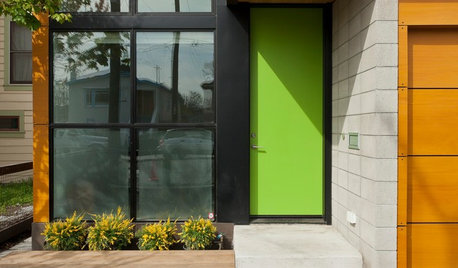
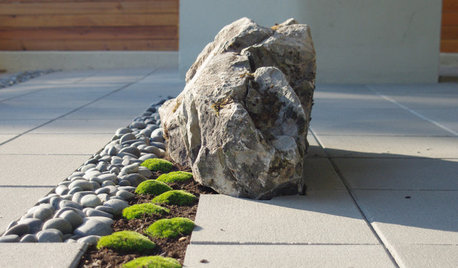



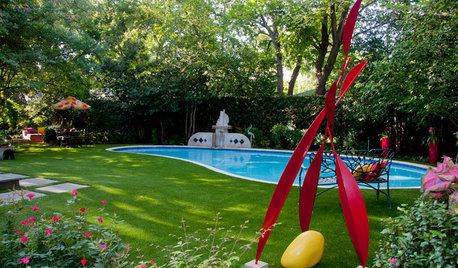
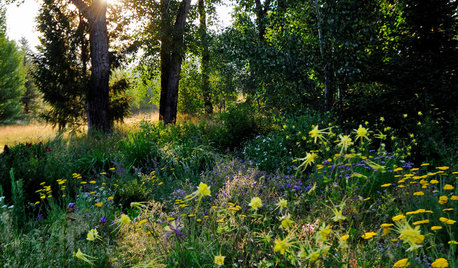
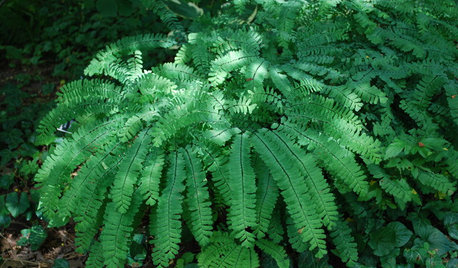











tapla (mid-Michigan, USDA z5b-6a)